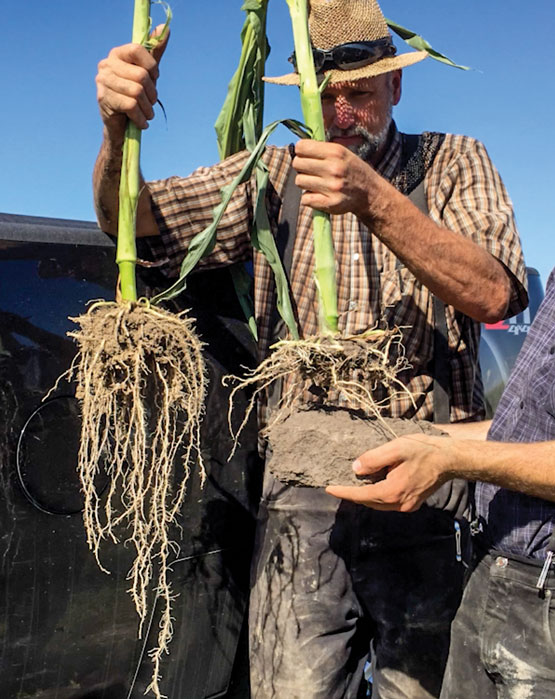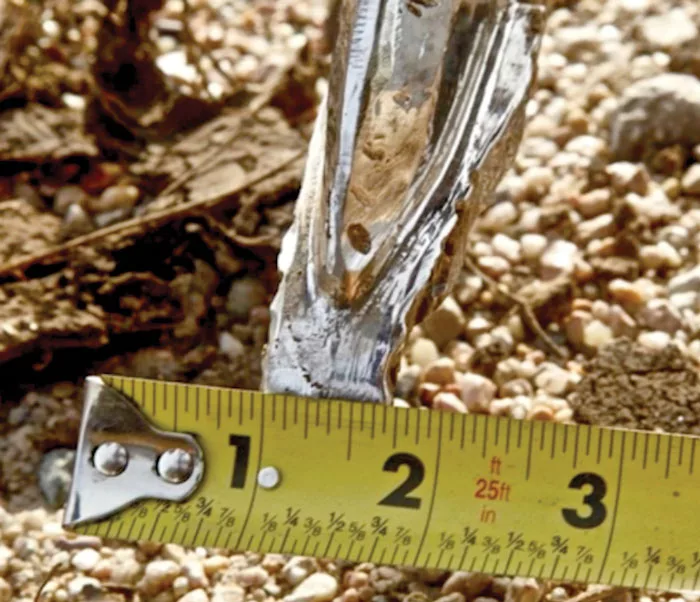With drought conditions becoming more common year after year, managing soil structure to support a successful crop is as important as ever.
“Normalization of deviation,” says Kevin Kimberley, an Iowa strip-tiller with over 35 years of experience and owner of Kimberley Ag Consulting. “If you keep deviating from what’s normal over and over again, it becomes the new norm. You keep getting by, then all of a sudden Mother Nature stops bailing you out.”
Though Kimberley says many strip-tillers don’t believe they’ll be the ones left high and dry by nature or that their current setups will fail them in tough conditions, they should be prepared to implement changes that will pull them through future droughts. Whether this means dealing with blowing soils, holes in the soil, hardpans, other soil compaction issues or water infiltration problems, the correct planter setup can help alleviate pressure on the crop.
Diagnosing the Problem
Kimberley spent 15 years working for equipment manufacturers such as Case IH and John Deere and started calibrating his own planters in the 1990s. Since then, he has consulted for strip-tillers across the Midwest. The first thing he does when visiting a farm is assess the current state of the soil to determine the needs of each individual field and adjust strip-till rigs accordingly.
Kimberley says penetrometers, though common, pale in comparison to the old fashioned way of measuring soil — getting your hands dirty.
“When the ground’s hard, the penetrometer will tell you it’s hard, and when it’s wet, it’ll slide through and tell you you’re in great shape,” Kimberley says. “If you just use a post hole auger, it’ll smear the wall and give you a false reading.”

CROWN ROOTS. On the left is the root structure from a strip-till operation on which Kimberley consulted. The right is a neighboring no-till field with hardpans that have prevented the roots from extending down. Image: Kevin Kimberley
Instead, he prefers to cut a chunk through the soil with a spade and dig into the wall with a buck knife. As he pulls the blade up through the soil, it will stick on points of compaction, alerting Kimberley to areas of concern.
Hardpans, for example, can be caused by a combination of soil composition and drought. This can prevent roots from extending further into the soil and limit water infiltration.
To check how severe surface compaction is, Kimberley simply pours water on the soil.
“Sometimes water takes an hour to absorb into the dirt,” he says. “Remember those old, hard sponges we used to have when we were younger — you’d pour water on them and it’d bubble off? Well, until the soil gets spongy, it can’t absorb it. You want that water to run into the slot. It’s all about retaining water for the future.”
Pockets of air below the surface could be a result of clay soils, wet conditions and too much downforce. Air pockets can prevent emergence and affect root development, negatively affecting harvest quality.
Having extensive crown roots, uninterrupted by compaction, is a sign of proper soil structure and moisture content, according to Kimberley.
“When I tip that plant over, I want it to sound like I’m ripping your pants,” he says.
Another sign of adequate water uptake is the temperature of the plant. A healthy corn plant should not be hotter than the air temperature, even in peak afternoon heat. To ensure good water infiltration and temperature regulation, berms should be soft on the surface with firmer structure below.
Checking seed-to-soil contact and seed placement are just as important. Without good soil contact, Kimberley knows the disc openers might be bowed. This can cause seedlings to grow down then back up, affecting stands. Uneven seed placement can crowd corn and ultimately starve crops. He he says this can be a parallel linkage issue.
Adapting to the Soil
Once all problems are assessed, planters can be adjusted according to individual field conditions, something that may require trial and error.
The drier the soil is, the more likely it is to be compacted and blow when tilled. Using in-line rippers and traditional mole knives will cause the most breakdown of good soil structure, according to Kimberley, who favors narrower and vertical mole knives over the standard wider, more angled knives.
An in-line ripper can cause the foundation of a dry field to crumble, meaning there’s no compacted lines for the planter to drive on. When it rains, that planter will sink into the soil, which is why Kimberley recommends off-setting the ripper. On one farm, he found that off-setting the ripper 19 inches from the strip-till rig broke up compaction without blowing the soil.
“It’s all about retaining water for the future…”
Despite the concern for blowing dry, compact soils apart with knives, Kimberley’s focus is on growing a successful crop.
“There’s guys telling me, ‘You’re going to make it blow,’ but you’ve got to have a crop,” he says. “It’s about making a strip, having a place to absorb water and having a place for our roots to go down.”
Kimberley says the way to do that is to cut through compaction without blowing the soil apart. Kimberley aims to fracture his soil just enough to get the seed planted and the seed trench closed. If the tractor is moving too fast, however, this can affect the ability for the planter to effectively close the seed trench.
“We were running 4 mph to give the gauge wheel enough time to pack the dirt,” Kimberley says. “I saw a lot of rootless corn this year, and it’s because at 5 mph, you travel 8 feet per second. You go 10 mph, you’re at 16 feet per second. You’ve got to give that gauge wheel a little time to pack the trench when you’re dry.”
Kimberley prefers a 3-coulter set up on his own planter, but the type of coulter used depends on the soil. Though he uses turbo coulters often, he finds that wetter soils stick to the blades, preventing good seed trench opening and closing. What he prefers is ripples, which he sources from Wearparts in Nebraska and CFC Distributors in Indiana. They offer the right amount of sidewall compaction for most of the soils he works with, while bubble coulters pack the sidewall more, something that can be beneficial in certain soil types.
As with coulters, Kimberley prefers a custom setup for his mole knives.
“CFC builds them the length I want,” he says. “I want longer knives so the dirt and trash doesn’t bunch up around the bolts. We use AR400 steel.”
On one Oklahoma farm, shaving down the sides of their mole knife to a ¾-inch ‘V’ gave them a 22-bushel yield advantage from the year before in red clay soil. Sometimes 1¼-inch works best, but Kimberley says it’s all about experimentation. This is why he encourages farmers to keep their worn-down mole knives.
“When this knife is shot, don’t throw it away because in the right year, they may be just right,” he says.
What doesn’t change, however, is Kimberley’s preferred knife angle. The more vertical the knife, the less likely you are to blow your soil apart, according to Kimberley. Crumbly soil can regain its structure with the right amount of moisture, but chunks of soil can’t, he says.
“Remember, if your soil is wet, the knife should be straight up and down,” Kimberley says. “If your soils are dry and hard, you need to be straight up and down. If you’re at an angle, you’re blowing.”
Across all the tips and tricks that work best for Kimberley, the one common theme is the willingness to experiment. What works for one farm or one field may not work next year, and setups should be curated to individual soil types, moisture levels and field conditions. This flexibility will help strip-tillers weather drought conditions and other extreme weather events in the future.
“I never quit learning,” Kimberley says. “The day they bury me is when I’m done.”







